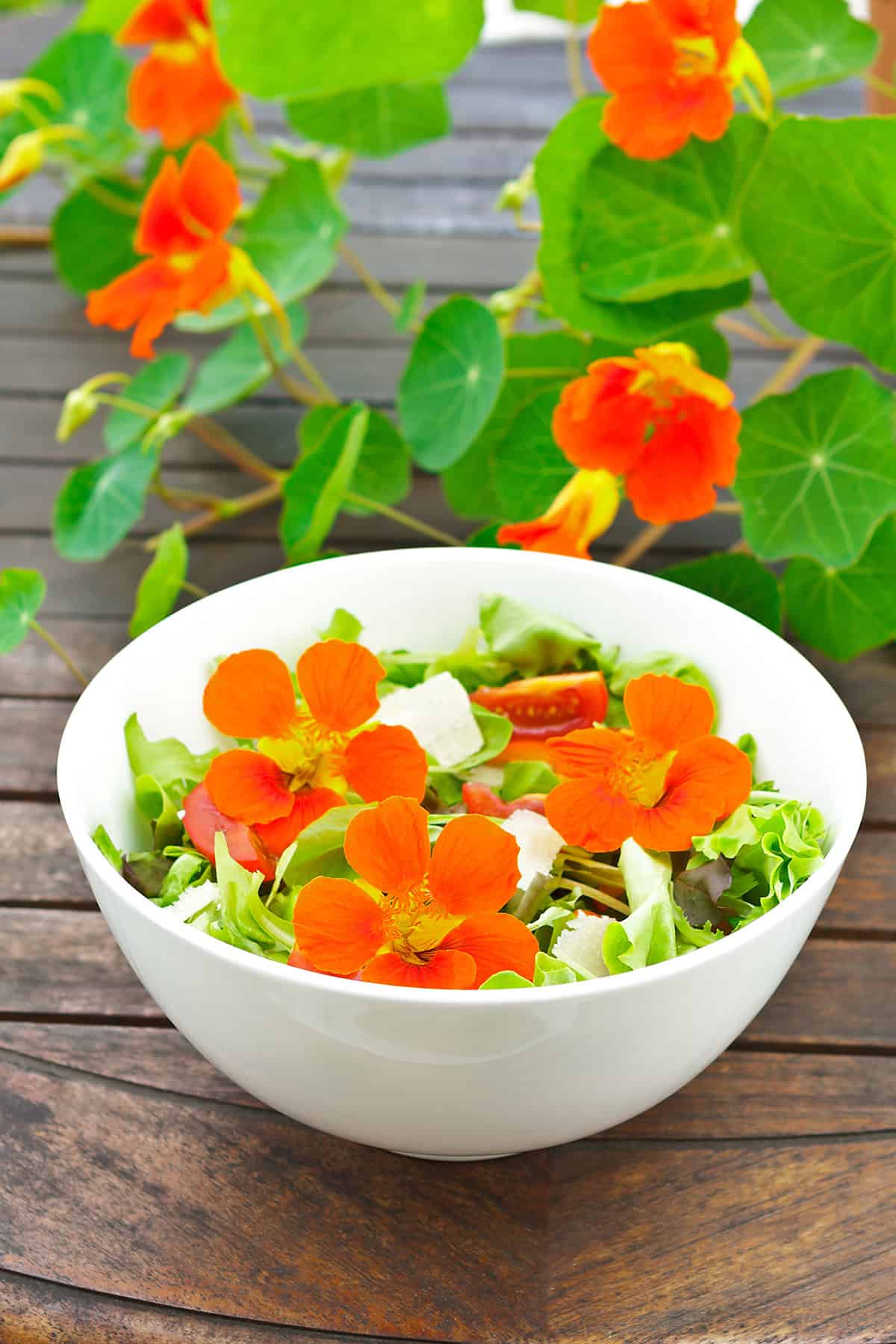You plant some nasturtium seeds in your garden, excited by the thought of their vibrant blooms and peppery leaves enhancing your salads. But as the days go by, you start to wonder if you’re giving them the right care. Learn the essential tips for nurturing these hardy plants so that they will thrive and bring beauty to your garden throughout the season.
Table of Contents
Why You Should Grow Nasturtiums in Your Garden
Nasturtiums are a vibrant addition to any garden. Their bright flowers bring color and bloom until frost.
Nasturtiums are easy to grow. Directly seed them in your garden beds or containers, and they adapt well to various soil conditions.
You need to water them throughout the growing season. Even though they tolerate drought, watering helps them bloom more.
Nasturtiums face a few pests. The most common ones are imported cabbage worms and aphids. Leafminers are another occasional issue.
These plants need space to spread. If you have tall varieties, you must stake or trellis them to support their growth.
Nasturtiums are more than just ornamental. You can add their leaves to salads, and the flowers can be used to stuff or garnish dishes. This makes nasturtiums a dual-purpose plant, useful in both the garden and the kitchen.
How to Care for Nasturtium
Nasturtiums are vibrant, easy-to-grow plants that brighten up any garden or container. They require proper light, water, soil, and minimal care to thrive.
Light

Nasturtiums need full sun for optimal growth. Aim for at least six hours of sunlight a day. If you’re in a hot climate, they can tolerate some light shade during the hottest part of the day. Indoors, place them near a south-facing window. Without enough light, they will become leggy and produce fewer flowers.
Watering
Water nasturtiums consistently but avoid overwatering. Keep the soil evenly moist but not soggy. Checking the top inch of soil is a good measure; water when it feels dry. Use a watering can for even distribution. In containers, ensure proper drainage to prevent root rot.
Soil

Nasturtiums prefer well-draining, moderately fertile soil. Sandy or loamy soils are best, while rich soils promote leafy growth over flowers. Adding compost before planting can improve poor soils. Ensure the soil pH is between 6.1 and 7.8 for ideal growth.
Fertilizer
Nasturtiums need minimal fertilization. Excessive nutrients result in fewer flowers. Use a balanced, slow-release fertilizer at the beginning of the growing season. Alternatively, lightly amend the soil with compost. Avoid high-nitrogen fertilizers as they encourage foliage over blooms.
Temperature and Humidity
Nasturtiums thrive in temperatures ranging between 55°F and 70°F. They are frost-sensitive, so plant them after the danger of frost has passed. In hot climates, provide afternoon shade. Humidity levels are generally not a concern for nasturtiums.
Pots and Containers

When growing nasturtiums in pots, use containers at least 12 inches in diameter. Ensure good drainage by using pots with holes at the bottom. Hanging baskets also work well. Use a light potting mix and water regularly to keep the soil moist but well-drained.
Pruning and Trimming
Prune nasturtiums to remove dead or damaged foliage. This encourages more blooms and maintains plant health. Pinch back the tips of young plants to promote bushier growth. Regularly deadhead spent flowers to extend the blooming period.
Pests
Nasturtiums are relatively pest-resistant but can attract aphids and cabbage worms. Check plants regularly and remove pests by hand or use insecticidal soap if necessary. Companion planting can deter pests. For instance, planting nasturtiums near cabbage can reduce cabbage worms.
Common Problems & Troubleshooting
Yellowing leaves often indicate water issues. Wilting may suggest too much or too little water. Fungal issues can arise in overly wet conditions. To prevent problems, ensure proper watering and good air circulation. Regular inspection helps catch and address issues early.
Recipes That Use Nasturtiums
Nasturtiums are versatile in the kitchen. You can use the leaves, flowers, and seeds in various recipes. They add a peppery flavor similar to watercress or arugula.
Nasturtium Salad

Mix nasturtium leaves with baby spinach, arugula, and cherry tomatoes. Add a light vinaigrette. Garnish with nasturtium flowers for a vibrant look. This salad is both flavorful and colorful.
Nasturtium Pesto
Blend nasturtium leaves with garlic, pine nuts, Parmesan cheese, and olive oil. You can use this pesto over pasta or as a spread on sandwiches. It offers a unique, peppery twist compared to traditional basil pesto.
Stuffed Nasturtium Flowers

Fill nasturtium flowers with a mixture of cream cheese, chives, and black pepper. Chill before serving. This makes an elegant appetizer that’s both beautiful and tasty.
Nasturtium Pickles
Pickle the seeds in a vinegar brine with dill and garlic. Use these pickled nasturtium seeds as a garnish on salads or in cocktails. They provide a crunchy, tangy taste.
Nasturtium-leaf Pancakes

Whisk together flour, baking powder, and salt. Stir in chopped nasturtium leaves and diced green onions. Cook spoonfuls of batter on a hot griddle until golden brown. These savory pancakes pair well with sour cream.






